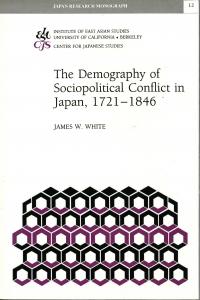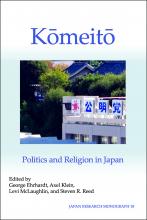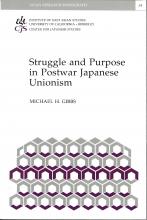The Demography of Sociopolitical Conflict in Japan, 1721–1846
The Demography of Sociopolitical Conflict in Japan, 1721–1846
James W. White
This monograph examines population in regard to social conflict and political protest in a preindustrial agrarian society: Japan under the rule of the Tokugawa shoguns. The dimensions of population under consideration are absolute size, density, pressure (on the food supply), distribution, and crisis (resulting from natural calamity).
As a nonprofit academic press, we need your support to publish our books. Your gift can help us make more of our titles available as e-books. DONATE NOW
Title information
This monograph examines population in regard to social conflict and political protest in a preindustrial agrarian society: Japan under the rule of the Tokugawa shoguns. The dimensions of population under consideration are absolute size, density, pressure (on the food supply), distribution, and crisis (resulting from natural calamity). The research suggests that demographic crises of all kinds should be linked with contentious behavior. The linkage between postindustrial growth and conflict should come as no surprise: the former contributes to a larger vulnerable population, to rising expectations, to new economic and potentially political resources in the hands of previously resource-poor groups, and to secular price rises.
James W. White
James W. White is professor emeritus of political science at the University of North Carolina at Chapel Hill.
The Demography of Sociopolitical Conflict in Japan (JRM 12)
1. Introduction – 1
2. Demography and Dissidence in Tokugawa Japan – 9
3. Demography and Dissidence: A Quantitative Analysis – 59
Appendix – 77
Notes – 87
References – 95
|
JOURNAL REVIEWS |
|
"This concise and cogent essay examines the quantitative dimension of popular protest in Tokugawa Japan....White's study is the first in Japanese or English to apply sophisticated [quantitative and statistical] analysis to Tokugawa protest....[It] is a methodological breakthrough to which all future studies will undoubtedly refer." ~Mark Ravina, Emory University, in Monumenta Nipponica, (http://www.jstor.org/stable/2385341) |
|
"At a time when most historians are writing synchronic, intensive case studies, White's attempt to build a kind of national causal scheme brings welcome diversity....[B]y outlining a thought-provoking model and questioning some common assumptions about demography , conomic growth, and protest, White's work makes a solid contribution to our understanding of conflicti Tokugawa Japan." ~Brian W. Platt, University of Illinois, in Pacific Affairs (http://www.jstor.org/stable/2761391) |



